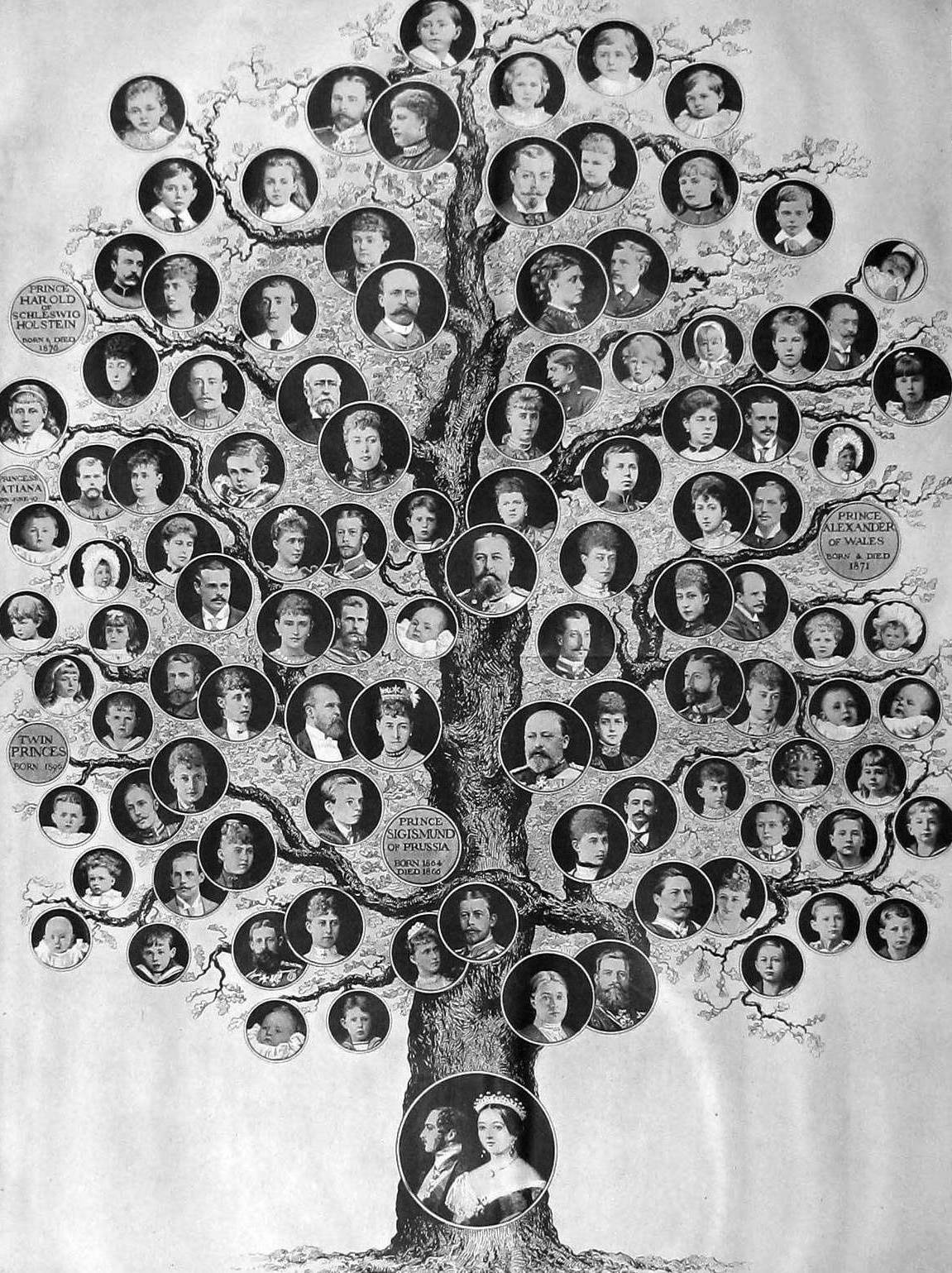Working with the papers of so many prominent genealogists here at NEHGS, I’ve developed an interest in the history of genealogy in America. An offshoot of this personal research interest has been an informal effort to identify the repositories where various prominent genealogists donated their papers. Over the years, this interest has broadened to a general interest in identifying “sizeable” genealogical collections and the repository where they are preserved. Data from this personal interest has supported several projects of the NEHGS Special Collections and vice versa. Continue reading Locating genealogical manuscript collections in the U.S.
Musings on seventeenth-century Puritans
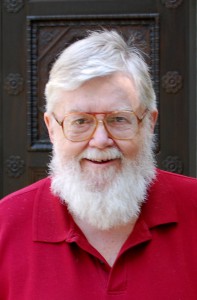 Lately, I have been reading Tom Webster’s Godly Clergy in Early Stuart England: The Caroline Puritan Movement, c.1620-1643. Much of this volume is built around Thomas Hooker’s time in Chelmsford, Essex, in the late 1620s. One of my goals is to document in detail and with precision these years in Hooker’s life, a period in which he was lecturer at Chelmsford, school teacher at Great Baddow, and a leading influence on the development of young ministers of Puritan inclinations in East Anglia.
Lately, I have been reading Tom Webster’s Godly Clergy in Early Stuart England: The Caroline Puritan Movement, c.1620-1643. Much of this volume is built around Thomas Hooker’s time in Chelmsford, Essex, in the late 1620s. One of my goals is to document in detail and with precision these years in Hooker’s life, a period in which he was lecturer at Chelmsford, school teacher at Great Baddow, and a leading influence on the development of young ministers of Puritan inclinations in East Anglia.
Much has been written about Hooker at this stage of his life, some of it from Cotton Mather’s Magnalia Christi Americana, not the most reliable of sources. Modern historians make repeated reference to the “household seminary” run by Hooker, and I am concerned that this aspect of Hooker’s career has been distorted by the way Mather presented his information. A fair portion of my research trip to England in the fall will be devoted to collecting copies of all the original sources for Hooker’s life in Essex, and reading Webster’s book is part of the preparation for that research. Continue reading Musings on seventeenth-century Puritans
Historic Image Search: Google vs. Bing
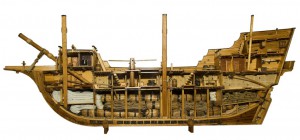 When working on a family history, we like to include historic images and photos of places and events as well as photos from family collections. More and more, we’re using both Google and Bing image searches to kick-start our efforts. More and more, I’m coming to prefer Bing. Continue reading Historic Image Search: Google vs. Bing
When working on a family history, we like to include historic images and photos of places and events as well as photos from family collections. More and more, we’re using both Google and Bing image searches to kick-start our efforts. More and more, I’m coming to prefer Bing. Continue reading Historic Image Search: Google vs. Bing
An answer – and more questions

As a follow-up to my first post at Vita Brevis, back in early January, I am happy to report that a likely photograph of my great-grandfather Edward Hughes Glidden (1873-1924) has surfaced – but, initially (and tantalizingly), an accident to the glass plate meant that his face was obscured.
The caption for the photograph reads ”1920. Man in Overcoat walking by Homewood Apartments. Man could be Lt. Glidden, architect and resident of Homewood apts.” on North Charles Street in Baltimore. According to the collection’s online catalogue, the captioner provided the identification for the photograph’s subject, and I wonder if the original notation was for E. H. Glidden, the name he most often used professionally. Continue reading An answer – and more questions
Home from RootsTech 2014
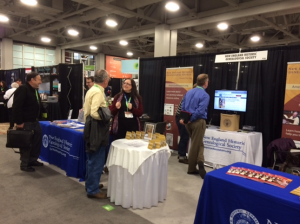 After a whirlwind time in Salt Lake City for RootsTech 2014, the NEHGS web team is back in Boston. This year’s conference felt like a big step up from last year’s (moving into the larger half of the Salt Palace) without seeming overwhelming, although I personally didn’t get the chance to visit as many booths as I would have liked. The fact of the matter is that I was too busy talking to the visitors at our booth. Continue reading Home from RootsTech 2014
After a whirlwind time in Salt Lake City for RootsTech 2014, the NEHGS web team is back in Boston. This year’s conference felt like a big step up from last year’s (moving into the larger half of the Salt Palace) without seeming overwhelming, although I personally didn’t get the chance to visit as many booths as I would have liked. The fact of the matter is that I was too busy talking to the visitors at our booth. Continue reading Home from RootsTech 2014
Something else inventories can tell us
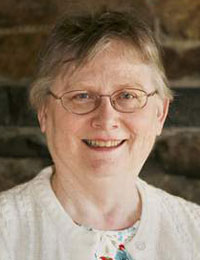 My winter social schedule was enlivened recently with a talk given by one of my favorite speakers, Peg Baker of Plymouth. She and her husband, Jim Baker, are well known for their vast expertise in all things Pilgrim. Peg is Director Emeritus of The Pilgrim Society in Plymouth and compiler of the just released and completely revised edition of Mayflower Families Through Five Generations on Pilgrim Thomas Rogers, published by the General Society of Mayflower Descendants. Continue reading Something else inventories can tell us
My winter social schedule was enlivened recently with a talk given by one of my favorite speakers, Peg Baker of Plymouth. She and her husband, Jim Baker, are well known for their vast expertise in all things Pilgrim. Peg is Director Emeritus of The Pilgrim Society in Plymouth and compiler of the just released and completely revised edition of Mayflower Families Through Five Generations on Pilgrim Thomas Rogers, published by the General Society of Mayflower Descendants. Continue reading Something else inventories can tell us
A triumph of genealogical scholarship
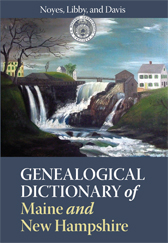 For more than seventy years the Genealogical Dictionary of Maine and New Hampshire – compiled by Charles Thornton Libby, Walter Goodwin Davis, and Sybil Noyes, and published between 1928 and 1938 – has been the first recourse for those looking to trace their seventeenth-century northern New England ancestry. It is one of a handful of titles in the genealogical field that has never been out of print for very long. Continue reading A triumph of genealogical scholarship
For more than seventy years the Genealogical Dictionary of Maine and New Hampshire – compiled by Charles Thornton Libby, Walter Goodwin Davis, and Sybil Noyes, and published between 1928 and 1938 – has been the first recourse for those looking to trace their seventeenth-century northern New England ancestry. It is one of a handful of titles in the genealogical field that has never been out of print for very long. Continue reading A triumph of genealogical scholarship
Collaboration at RootsTech 2014
The first two days of RootsTech have gone by in a blur, and it has been a pleasure to get to meet so many members in person and match faces to email addresses! I hope that more of you will come by to say hello at booth #926.
While for many you this will be the second day of RootsTech, for NEHGS Digital Collections Coordinator Chris Carter and me the conference started on Wednesday with the Innovator Summit. The conference itself is increasingly focused on teaching genealogists how to improve their experience studying family history; by contrast, the Innovator Summit retains the pioneer spirit of conferences past as the technical staffs from industry leaders as well as smaller developers gather together to trade wild ideas here in Salt Lake City.
Some light reading material
 In his 1693 will, Richard Martyn of Portsmouth, New Hampshire, directed that all the books his third wife “brought with her to my house” be returned to her. Curiosity sent me off on a tangent (it doesn’t take much to distract me) to see if I could identify those books or where she got them. Mrs. Martyn was Elizabeth (Sherborn) (Langdon) (Lear) Martyn, daughter of Henry Sherborn and previously wife of Tobias Langdon and Tobias Lear. So far, the answer eludes me, but I did find some interesting collateral information in the process. Continue reading Some light reading material
In his 1693 will, Richard Martyn of Portsmouth, New Hampshire, directed that all the books his third wife “brought with her to my house” be returned to her. Curiosity sent me off on a tangent (it doesn’t take much to distract me) to see if I could identify those books or where she got them. Mrs. Martyn was Elizabeth (Sherborn) (Langdon) (Lear) Martyn, daughter of Henry Sherborn and previously wife of Tobias Langdon and Tobias Lear. So far, the answer eludes me, but I did find some interesting collateral information in the process. Continue reading Some light reading material
Queen Victoria’s family tree
NEHGS recently bought a luxuriant “genealogical tree” chart* of Queen Victoria and her descendants, published for the Queen’s Diamond Jubilee in June 1897. The chart, removed from the issue of The Graphic dated 26 June 1897, was at one time in the collection of the West Ham (Surrey) Public Libraries.
What makes the chart unusually interesting is both the extent of the Queen’s family in 1897, and the fact that almost every family member was illustrated – three of the blanks are for children who died in infancy, including Prince Alexander of Wales, the youngest son of the then-Prince and Princess of Wales. Another blank is for “Princess” Tatiana, the new-born daughter of the Emperor and Empress of Russia, who would perish with her parents and siblings at Yekaterinburg in 1918. Continue reading Queen Victoria’s family tree
